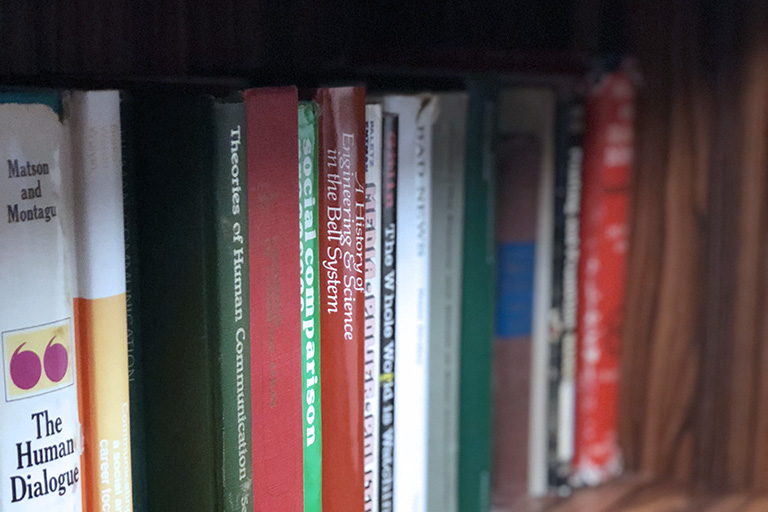Bente, G., Krämer, N.C., & Petersen, A. (2000). Gaze patterns and socio-emotional attributions induced by computer simulated nonverbal behavior. Proceedings of the 27th International Congress of Psychology, Stockholm.
Boster, F.J., Cameron, K.A., Campo, S., Liu, W., Lillie, J.K., Baker, E.M., & Ah Yun, K. (2000). The persuasive effects of statistical evidence in the presence of exemplars. Communication Studies, 51, 296-306.
Bresnahan, M.J. (2000). Centering in Tagalog. In M. L. Bautista, T. Llamzon, & B. P. Sibayan, (Eds.), Parangal Cang Brother Andrew: Fetschrift for Andrew Gonzalez on his 60th birthday (pp. 35-46). Manila, Philippines: Linguistic Society of the Philippines.
Bresnahan, M.J., & Cai, D.H. (2000). From the other side of the desk: Conversations with international students about teaching in the U. S. Qualitative Research Reports in Communication, 4, 1-15.
Butler Ellis, J., & Wittenbaum, G.M. (2000). Relationships between self-construal and verbal promotion. Communication Research, 27, 704-722.
Dearing, J.W. (2000), “The Cumulative Community Response to AIDS in San Francisco,” in Ronald E. Rice and Charles K. Atkin (Eds.), Public Communication Campaigns, 3rd ed.: Theory, Practice and Effects, Thousand Oaks, CA: Sage, 305-308.
Greenberg, B.S., Sherry, J.L., Busselle, R.W., Rampoldi-Hnilo, L., & Smith S.W. (2000). A quantitative content analysis of the television talk show. In L. Klein (Ed.). Talking Up a Storm: The Social Impact of Daytime Talk Shows. Westport, CT: Praeger.
Lapinski, M.K. & Levine, T. (2000). Culture and information manipulation theory: The effects of self-construal and locus of benefit on information manipulation. Communication Studies, 51, 55-73.
Mattson, M., Allen, M., Ryan, D.J., & Miller, V.D. (2000). Considering organizations as a unique interpersonal context for deception detection: A meta-analytic review. Communication Research Reports, 17(2), 148-160.
Miller, V.D., Allen, M., Casey, M. K., & Johnson, J.R. (2000). Reconsidering the organizational identification questionnaire. Management Communication Quarterly, 13(4), 626-658.
Miller, V. D., & Medved, C. (2000). Managing after the merger: The challenges of employee feedback and performance appraisals. Management Communication Quarterly, 13(4), 659-667.
Orrego, V.O., Smith, S.W., Mitchell, M.M., Johnson, A.J., AhYun, J., & Greenberg, B.S. (2000). Disclosures and privacy issues on television talk shows. In S. Petronio (Ed.), Balancing disclosure, privacy, and secrecy (pp. 249-259). Hillsdale, NJ: Erlbaum.
Smith, S.W., Atkin, C.K. & Fediuk, T. (2000). Youth reactions to televised liquor commercials. Journal of Alcohol and Drug Education, 46, 37-45.
Suvedi, M., Lapinski, M.K., & Campo, S. (2000). Farmers’ perceptions of MSU Extension: Trends and lessons from 1996 to 1999. Journal of Extension, 38(1).
Tamborini, R., Mastro, D., Chory, R., & Huang, H. (2000). The color of crime and the court: A content analysis of minority representation on television. Journalism & Mass Communication Quarterly, 77, 639-654.
Witte, K, & Donohue, W.A. (2000). Preventing vehicle crashes with trains at grade crossings: The risk seeker challenge. Accident Analysis and Prevention, 32, 127-139.
Wittenbaum, G.M. (2000). The bias toward discussing shared information: Why are high status group members immune? Communication Research, 27, 379-401.
